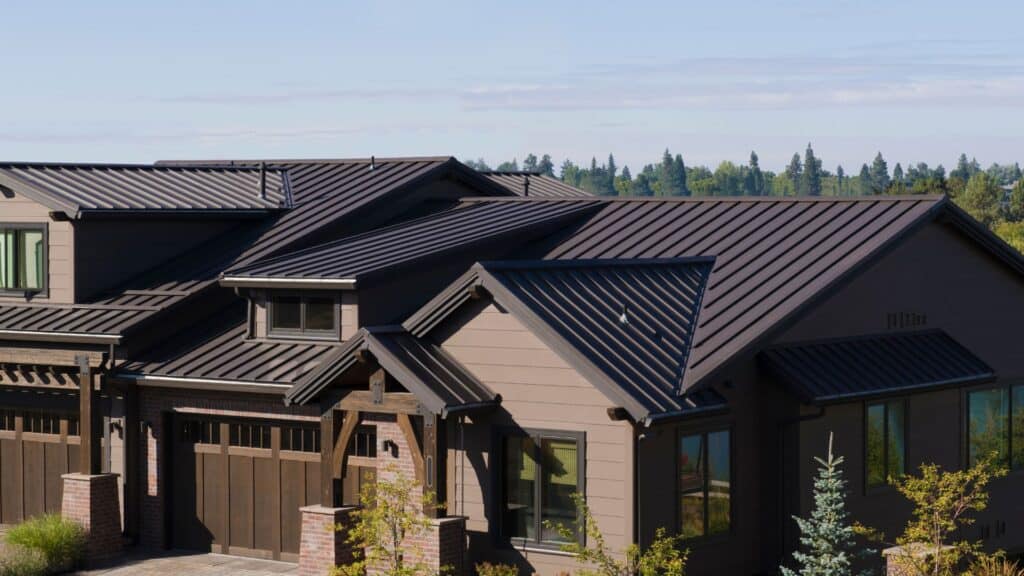Choosing the right roofing material is crucial for the longevity and durability of your home. The roof is your first line of defense against the elements, and its lifespan can significantly impact home maintenance costs and frequency. This guide explores the lifespans of various roofing materials, helping homeowners make informed decisions based on durability, maintenance, and cost-effectiveness.
Factors Influencing Roof Lifespan

The lifespan of roofing materials is influenced by several key factors. Climate and environmental conditions, such as exposure to intense sun, wind, and coastal air, can accelerate wear. The quality of installation and ongoing maintenance also play critical roles in extending a roof’s life. Additionally, advancements in material quality and manufacturing processes have improved the longevity of many roofing options.
Asphalt Shingles
Asphalt shingles, including 3-tab and architectural styles, are among the most popular roofing choices due to their cost-effectiveness and versatility. Typically, these shingles last between 15 to 30 years, with variations depending on climate conditions and maintenance. Regular inspections for damage and proper attic ventilation can help extend their lifespan.
Metal Roofing
Metal roofing, made from aluminum, steel, or copper, offers a durable and long-lasting roofing solution. With lifespans ranging from 40 to 70 years, metal roofs withstand harsh weather conditions better than many materials. Their longevity can be maximized through regular cleaning to prevent debris accumulation and rust.
Clay and Concrete Tiles
Clay and concrete tiles are prized for their aesthetic appeal and durability, often lasting over 50 years. These materials are especially suited to hot, dry climates but require regular inspection to replace cracked or broken tiles promptly, ensuring their impressive lifespan.
Slate Roofing
Slate roofing is renowned for its natural beauty and durability, with lifespans exceeding 100 years in some cases. Resistant to harsh environmental conditions, slate roofs demand minimal maintenance, primarily focused on gutter cleaning and inspection for loose tiles.
Wood Shingles and Shakes
Wood shingles and shakes provide a natural, rustic appearance and typically last 20 to 30 years. Their lifespan can be shortened by moisture-related issues, including rot and insect damage. Proper maintenance, such as applying water repellants and ensuring good ventilation, is essential.
Synthetic Roofing Materials
Synthetic roofing materials, including rubber, plastic, and composite, offer a modern alternative to natural options. These materials mimic the appearance of wood, slate, or clay tiles and boast lifespans of 30 to 50 years with minimal maintenance requirements, making them an increasingly popular choice.
Green Roofing
Green, or living, roofs are a sustainable option that incorporates vegetation on flat or slightly sloped structures. Beyond their environmental benefits, green roofs can last 40 years or more with proper maintenance, including irrigation and weed control, enhancing building insulation and reducing runoff.
Enhancing Roof Lifespan Through Professional Installation and Maintenance
The lifespan of any roofing material significantly benefits from professional installation and regular maintenance. Choosing experienced roofing contractors ensures that your roof is installed correctly, while routine inspections and maintenance identify and address potential issues before they lead to significant damage.
Each roofing material offers its own set of benefits, maintenance needs, and lifespan expectations. When selecting the best roofing option for your home, consider not just the initial cost but also the long-term durability and maintenance requirements. Consulting with roofing experts like Advosy can provide personalized advice and professional installation services tailored to your specific needs and location, ensuring that your investment in your roof is well protected and serves your home for years to come.


